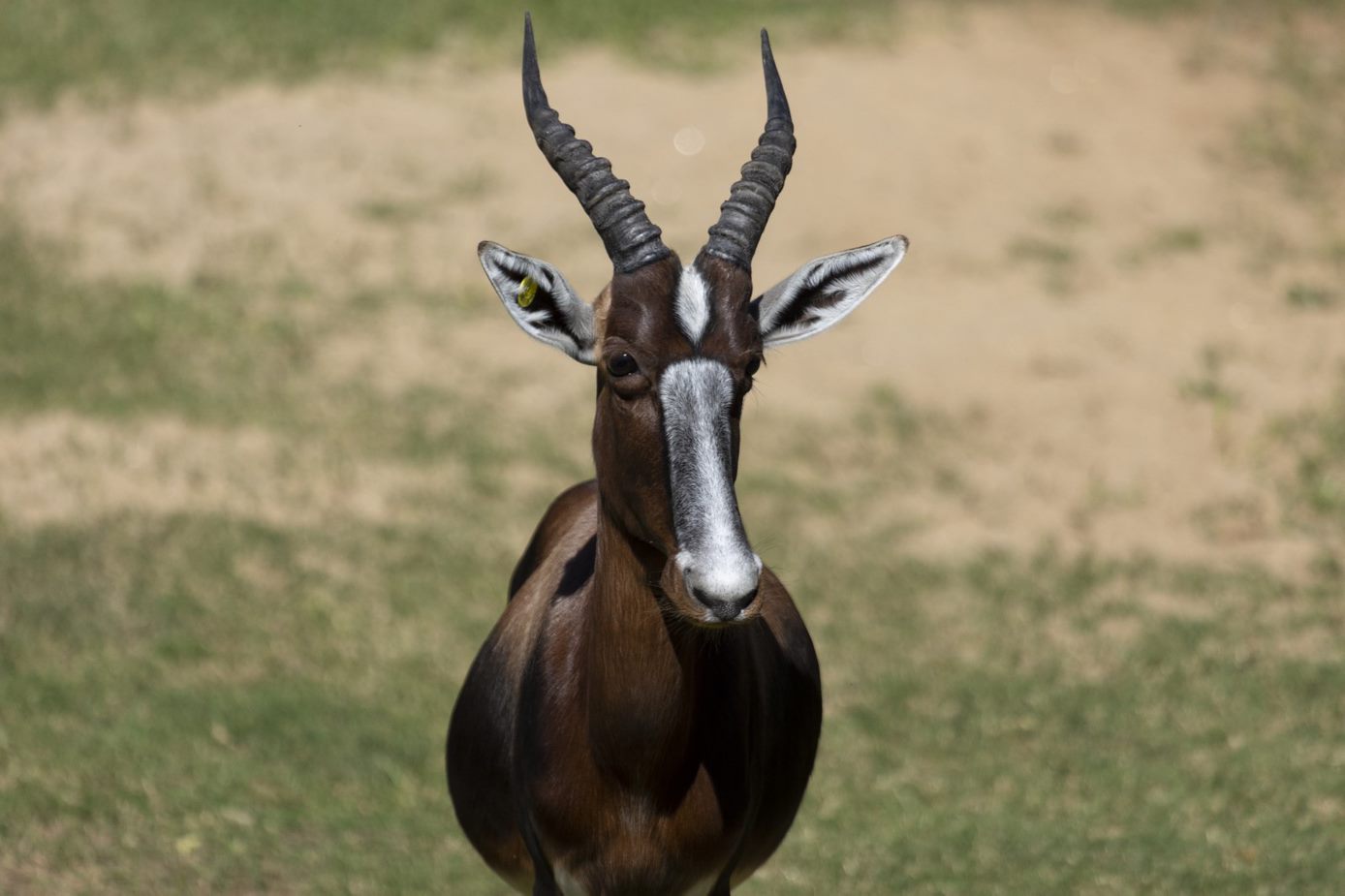Summary of Welfare Research Applied – Zoo Atlanta:
Zoo Atlanta’s final blog post of the year presents a case study focused on the welfare of Casper, a bontebok, after being introduced into a habitat with giraffes, zebras, and ostriches in October 2023. Traditionally a herd animal, Casper lived alone, which raised concerns about his well-being. Researchers observed Casper for nine months, documenting his behaviors and interactions with the other species, categorizing the interactions as neutral, affiliative, or agonistic, and taking note of their locations within the habitat.
The observations showed Casper engaging in typical bontebok activities, such as grazing and moving, with most of his time spent in areas with food or shade. At the same time, Casper interacted most with Shinda, the zebra; often agonistically, those interactions were reduced after Shinda left the zoo. Subsequently, Casper interacted more with Lennard, the giraffe.
The research provided insight into potential improvements in Casper’s management, such as altering food placement or introducing more bonteboks for increased species-specific interaction. Further studies will be conducted to assess any implemented changes and their effect on Casper’s behavior. The outcome of these studies will guide the zoo’s next steps in animal care and welfare, demonstrating the ongoing commitment to using research to enhance the living conditions of animals in their care.
– Alexz Allen, Research Assistant at Zoo Atlanta
– The integration of research in animal welfare at Zoo Atlanta, particularly regarding a bontebok named Casper.
– Observing and analyzing interspecies interactions to improve animal management and care.
– Exploring the potential for habitat and social adjustments to enhance the lives of zoo inhabitants.
Finding Harmony in Unlikely Places: The Story of Casper and His Savannah Companions
In conservation and animal care, there is a constant endeavor to balance natural behaviors and the confines of a managed setting. This intricate dance of science and empathy unfolds in myriad ways, including the research-driven approach adopted by institutions such as Zoo Atlanta, a pioneer in marrying data with animal well-being. The story I’m about to unravel winds around Casper, a bontebok whose unique challenges provide invaluable insights into the finesse required in zoo management.
Casper’s Journey to Integration
Casper, a spry bontebok antelope with a gaze that hovers between curiosity and caution, arrived in October 2023 to join an eclectic cast of African savanna denizens: towering giraffes, zippy zebras, and ostentatious ostriches. Now, bonteboks are inherently social creatures, thriving amid the dynamics of a herd. However, at Zoo Atlanta, Casper’s script was slightly different—he was set to navigate this savanna stage solo.
The Art of Watchfulness
The team at Zoo Atlanta, equipped with clipboards and a meticulous eye for detail, embarked on a scientific odyssey to ensure Casper’s proverbial ship was not adrift. Through a telescope of behavioral analytics, they charted Casper’s course—an exercise in patient observation that spanned over nine fruitful months.
A Mosaic of Daily Life
Diligent note-taking and pattern-reading revealed that most of Casper’s daylight hours were speckled with feeding, grazing, and exploring—a reflection of a bontebok doing what bonteboks do. Yet, this data tapestry had more threads to offer. Casper’s preferred locales within his spacious enclosure were predictably those rich’s bounty or sprinkled with the refuge of shade.
The Social Fabric
The savanna is not just a stage for solo acts. It’s a fertile ground for interspecies ballet, each move—from a friendly nuzzle to a territorial trot—holding meaning. Casper’s interactions, cataloged as neutral, affiliative, or agonistic, unveiled a particular rapport with Shinda, the zebra. Could their shared dietary preferences or comparable size hint at an elective affinity? It’s a question for the books.
Post-Shinda Dynamics
Life is much like a carousel, always in motion, and Shinda’s departure to a new habitat shifted the social dynamics at the savanna. Casper’s instance of agonistic tiffs saw a commendable nosedive. The plot thickened with Lennard the giraffe stepping into the role of Casper’s frequent counterpart, albeit with a gentler diplomacy.
The Aftermath and Looking Forward
Armed with graphs and a wealth of behavioral vignettes, the team at Zoo Atlanta bore the fruits of their labor—answers. The creative furnaces burn bright with possibilities: distributing food sources to quell potential spats or introducing new bontebok companions to enrich Casper’s world. Each tweak in this living diorama cues a new chapter of observation.
The Pulse of Research
Central to the nurturance of animals like Casper is the research that underpins their care—a practice as fundamental as it is evolutionary. Even before grand strategies are unfurled, a basic observational study can whisper volumes about the needs and nuances of these graceful inmates.
In conclusion, the tableau of Casper’s cohabitation at Zoo Atlanta illustrates a broader symphony in which animal welfare researchers, like modern-day conductors, harmonize data with life. It highlights the necessity to tailor adjustments to each species’ unique requirements and maintains an enduring commitment to enriching the lives of those under human care. This ongoing symphony, underscored by observation and adaptation, rings out, clear and hopeful—a tribute to the unseen work that ensures the heartbeat of conservation remains robust and attuned to the needs of its most important subjects: the animals.
May Casper’s story remind us of the delicate balance within our human-managed menageries and the silent dialogues between species that unfold under our watchful gaze. Here’s hoping that the year ahead at Zoo Atlanta, and in havens of wildlife conservation globally, is fraught with discoveries, joys, and a deeper understanding of the kindred spirits that share our planet.


